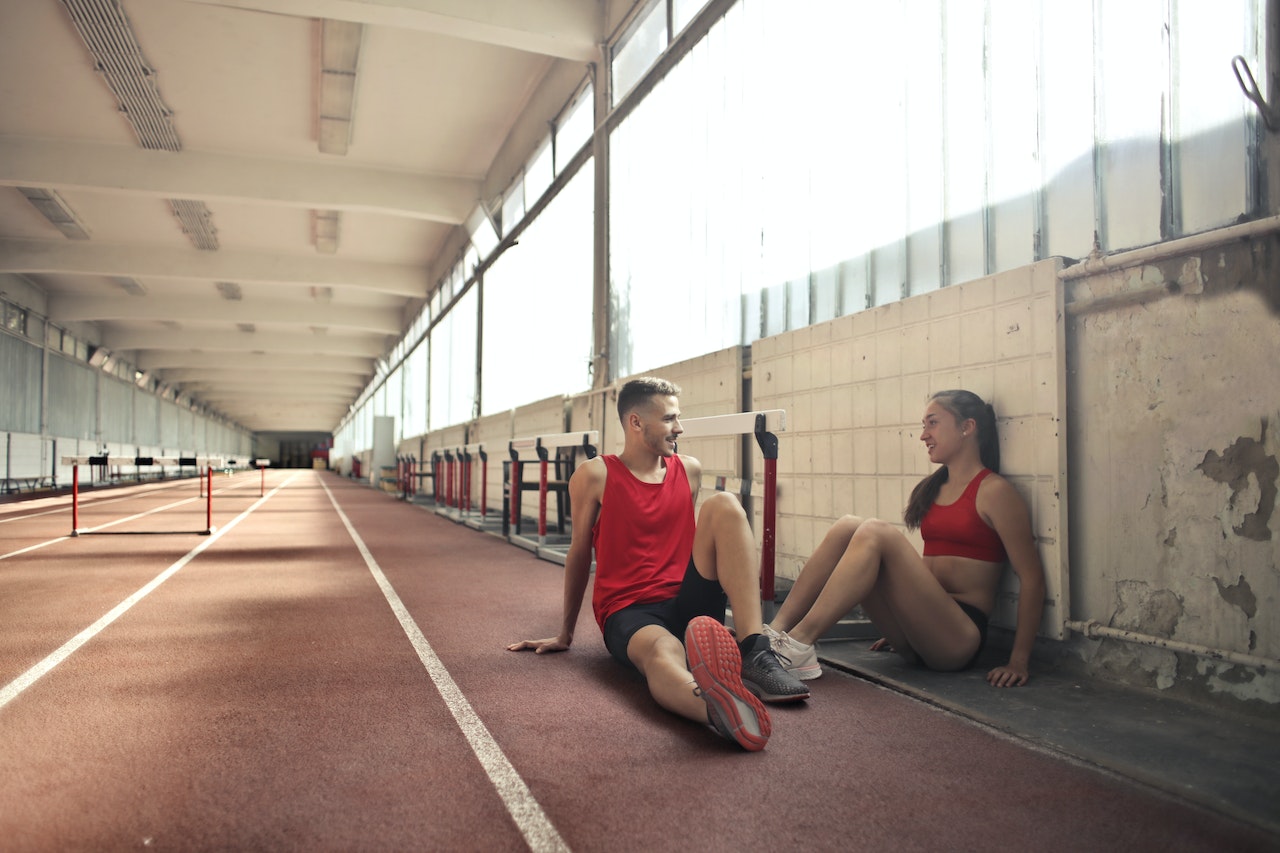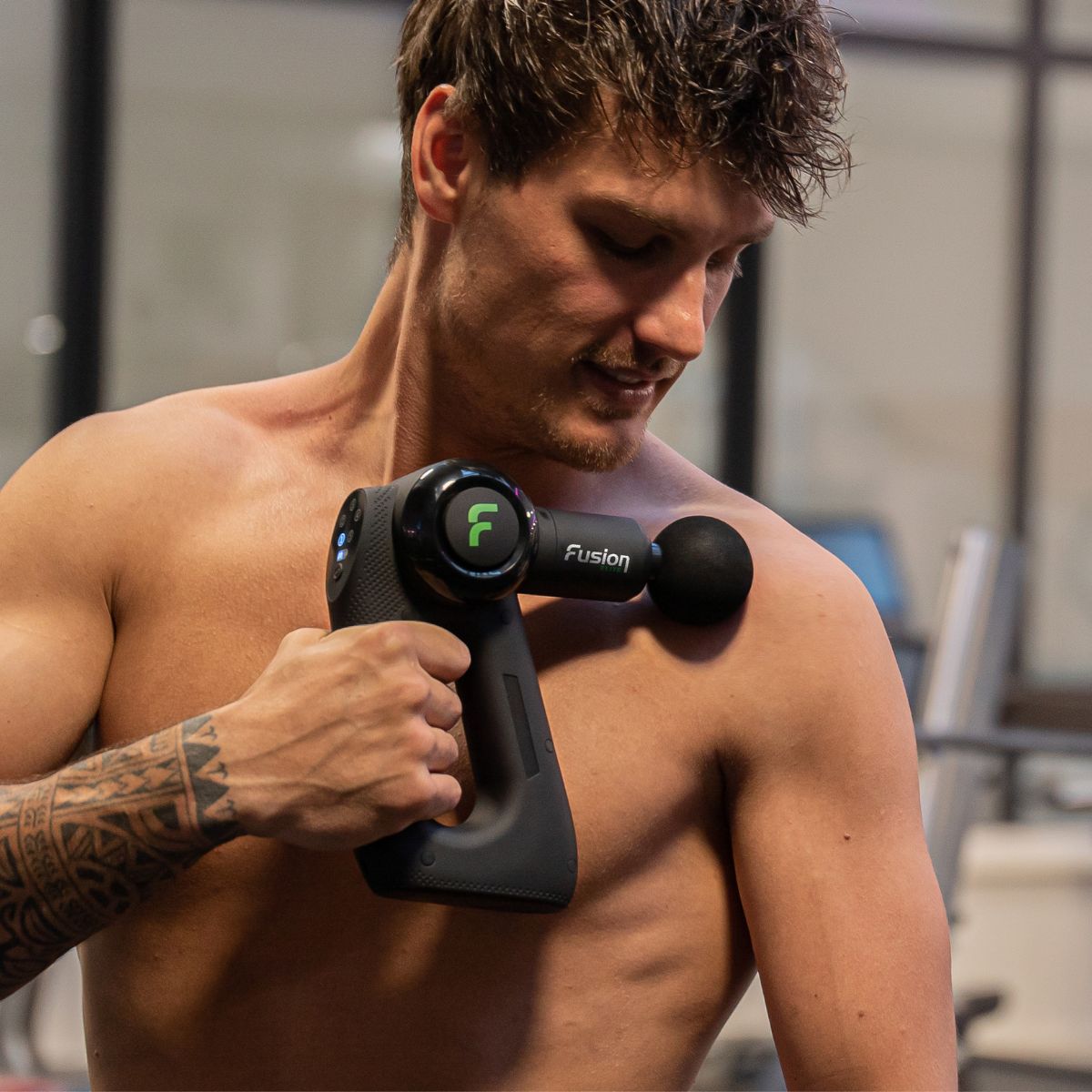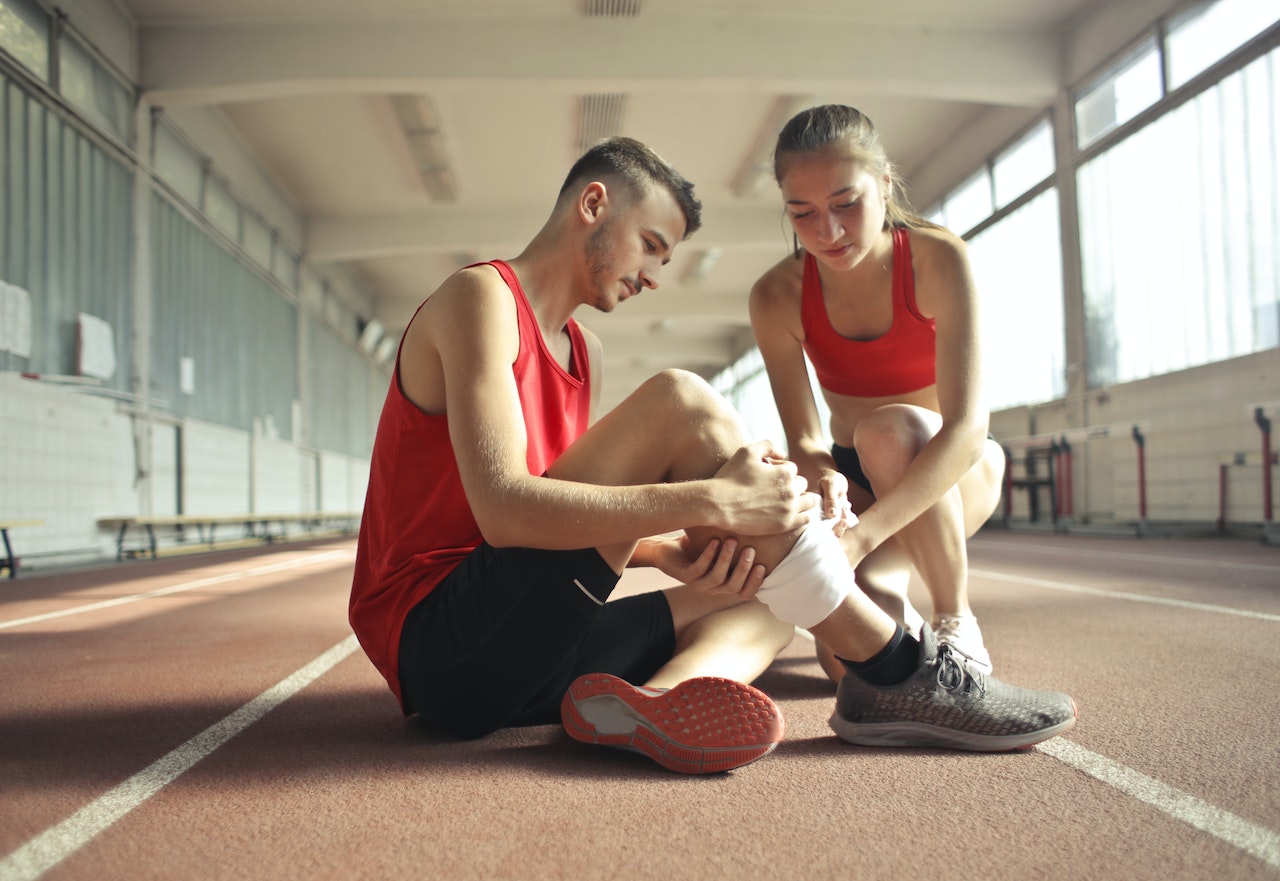Having restless legs after an exercise session is a common complaint among athletes and fitness enthusiasts.
This syndrome is accompanied by a variety of unpleasant sensations that include tingling, burning, or aching in the legs that can be hard to ignore.
If you've ever experienced restless legs after an intensive workout session, you're not alone. While the exact causes cannot be pinpointed, several factors can contribute to this condition.
In this article, we'll discuss the potential causes of restless legs after exercise and what you can do to prevent it.
Restless Legs Syndrome (RLS)
Restless Legs Syndrome (RLS) is a neurological disorder that causes an irresistible urge to move the legs. As mentioned earlier, it is characterized by an uncomfortable feeling in the legs that is difficult to ignore.
This feeling usually worsens at night and can incredibly disrupt your normal sleep schedule. RLS can also occur during periods of rest or inactivity, such as sitting for long periods of time or after exercise.
In addition, the intensity and duration of exercise can play a role in the onset of restless legs syndrome. One cannot specifically name a sport in which there is a greater chance of getting restless legs.
There are several possible causes of restless legs after exercise. Let's take a look at them.
Potential Causes of Restless Legs After Exercise
There can be several causes of restless legs after exercise, from dehydration to vitamin deficiencies and more, the potential causes of restless leg syndrome are numerous and diverse. Let's look into them.
1. Dehydration
Dehydration is one of the most common causes of restless legs after exercise. When you don't drink enough water, your body can become dehydrated, leading to an electrolyte imbalance that can cause uncomfortable sensations in the legs.
Dehydration can also cause muscle fatigue, making it difficult for your muscles to relax and recover after a workout. This can lead to restless legs.
2. Muscle fatigue
Muscle fatigue is another potential cause of restless legs syndrome.
When your muscles are overworked, they can become fatigued and unable to relax properly. This can make it difficult to move your legs, leading to uncomfortable sensations associated with restless leg syndrome.
Furthermore, fatigue can cause leg cramps and muscle spasms, further contributing to restless legs syndrome.
3. Vitamin deficiencies
Vitamin deficiencies can also contribute to restless legs after exercise.
Certain vitamins such as iron, magnesium, and folate are essential for healthy muscle function and can help prevent the onset of restless legs syndrome.
If you're deficient in any of these vitamins, it may be contributing factor to your experiencing restless legs after exercise. Low levels of iron and other mineral deficiencies are prevalent among athletes and can lead to various symptoms, including fatigue and weakness.
4. Stress and anxiety
Stress and anxiety are two other potential causes of restless legs after exercise.
When you're feeling stressed or anxious, your body releases hormones that can interfere with your sleep cycle and make it difficult for your muscles to relax properly. This can lead to uncomfortable sensations in the legs associated with RLS.
What's more, stress and anxiety can also lead to muscle tension contributing to restless legs syndrome.
5. Electrolyte imbalance
Restless legs after exercise can also result from an electrolyte imbalance.
Electrolytes are minerals that help regulate the body's fluid balance and muscle function. Some include sodium, potassium, calcium, and magnesium.
When the levels of these minerals become imbalanced, it can lead to sensations in the legs that are associated with restless leg syndrome. If you're an avid exerciser, you must ensure you're getting enough electrolytes in your diet.
6. Medications
Certain medications can also cause restless legs after exercise.
When you take antidepressants and antipsychotics, they can interfere with your body's natural sleep cycle and make it difficult for your muscles to relax. This can lead to uncomfortable sensations in the legs associated with RLS.
Additionally, taking antihistamines and decongestants can also lead to restless legs syndrome. These medications are known to cause drowsiness and can interfere with your body's natural sleep cycle.
7. Caffeine and alcohol
Caffeine and alcohol can also contribute to restless legs after exercise.
Caffeine is a stimulant that can interfere with your sleep cycle and make it difficult for your muscles to relax properly. This can lead to uncomfortable sensations in the legs associated with RLS.
Alcohol is also a depressant and can interfere with your body's sleep cycle. With too much intake, you may experience sensations in your leg associated with restless legs syndrome after exercise.
Now that we've gone over the potential causes of restless legs after exercise, it's important to note that there are also some lifestyle changes you can make to help prevent them. But first, let's look at a few restless legs syndrome symptoms.
Symptoms of Restless Legs After Exercise
Having restless legs after an exercise workout usually comes with symptoms ranging from mild to severe and vary from person to person.
Some of them include the following:
1. Tingling sensations in the leg
Tingling sensations in the legs is one of the most common symptoms of restless legs after exercise. This can feel like an uncomfortable tingling or burning sensation that can be difficult to ignore.
It may also be accompanied by an urge to move your legs to relieve the sensation. This symptom is often worse at night and can interfere with your sleep cycle, leading to fatigue and exhaustion.
2. Sleep disorder
Having trouble sleeping is a symptom of restless legs after an exercise session.
When your muscles tense after a high activity level workout, it can be challenging to fall asleep or stay asleep for a whole night. This can lead to fatigue, irritability, and difficulty concentrating during the day.
3. Fatigue
Fatigue is yet another common symptom of restless legs after exercise.
When your body gets little to no rest, you may feel exhausted and lack the motivation to complete everyday tasks and activities. Fatigue can also affect your mood and make it harder to concentrate on tasks for long periods.
4. Aching
Another common sign of having restless legs after exercise is aching.
This can feel like a deep, dull ache in your leg muscles that can be very painful. It may also be accompanied by tightness or stiffness in the muscles, making it challenging to move around or get comfortable.
Aching can also interfere with your sleep cycle, leading to fatigue and exhaustion during the day.
If you're experiencing any of these symptoms, it's essential to address the problem's underlying cause.
This may include lifestyle changes such as avoiding caffeine and alcohol, exercising regularly, and getting enough restful sleep. Additionally, you may also want to consult your healthcare provider about prescription medications that can help relieve restless legs symptoms.
In the section below, we will detail some of these lifestyle changes to help prevent restless legs after an exercise program. Let's dive in!
Preventing Restless Legs After Exercise
Now that you know about the potential causes and symptoms of restless legs after exercise, let's look at some lifestyle changes you can make to help prevent them.
Preventing restless legs after an exercise program is essential in managing the condition.
While there are medications available to help relieve the symptoms, you can also make some lifestyle changes to reduce your risk of developing the syndrome after exercise.
Here are a few tips that can help:
1. Avoid caffeine and alcohol
Caffeine and alcohol are known to interfere with your body's natural sleep cycle, leading to restless legs after a workout session.
To help prevent this, it is vital to limit your intake of caffeine and alcohol. Avoid drinking coffee or other caffeinated beverages in the late afternoon or evening, as this can disrupt your sleep cycle.
What's more, try to limit your alcohol consumption to no more than one or two drinks per day.
2. Stay hydrated
Staying hydrated is one of the best ways to prevent restless legs after an exercise session. Please make sure you drink plenty of water before, during, and after your workout to ensure that your body has enough fluids to function properly.
What's more, try to avoid sugary drinks and energy drinks as these can cause dehydration and make your restless legs symptoms worse.
3. Luchtcompressie massage
In most cases, restless legs are caused by decreased blood flow. Blood flow is an important factor in leg recovery. Once your blood flow is good, you will find that you experience less pain.
Air compression massage is the right treatment, supported by reliable information (scientific evidence), to improve blood flow in your legs in a quick and effective way.
Based on air pressure, blood circulation is stimulated and blood is pumped from the feet to the heart. This obviously ensures good blood flow and counteracts muscle knots and other lactose accumulations in the muscles.
Fusion develops products that support athletes in the recovery process. So too with the Air-C Pro leg massage device, which was initially developed for elite athletes who wanted to speed up their muscle recovery. But then it was further developed for the medical world, and with success!
Meanwhile, Fusion has already been able to help many people treat RLS in a short time, see a very positive review below.

4. Get enough sleep
Getting enough sleep is essential for preventing restless legs after an exercise session. Aim to get at least seven to eight hours of sleep each night and try to go to bed and wake up at the same time every day.
Also, ensure that your bedroom is dark and quiet to help promote better sleep. Avoid using electronic devices such as phones and tablets before bed, as the blue light emitted can interfere with your sleep cycle.
5. Exercise regularly
While this may seem counterintuitive, regular exercise can help reduce the risk of developing restless legs syndrome.
Aim to get at least 30 minutes of moderate exercise each day. This could include walking, jogging, swimming, or cycling.
What's more, daily exercise workouts help to improve circulation and promote relaxation in your muscles, which can help prevent the onset of restless legs after an exercise session.
6. Take breaks during exercise
Taking regular breaks during an exercise session is a great way to reduce the risk of having restless legs.
When exercising, take a few minutes every 30 minutes or so to rest and stretch your muscles. This will help to prevent fatigue and keep your muscles relaxed. It can also help reduce the risk of developing cramps or muscle soreness.
If you are particularly tired, take a longer break and focus on stretching and massaging your muscles.
7. Wear comfortable shoes
Wearing comfortable shoes that fit properly is another way to prevent restless legs after an exercise session.
When choosing a pair of shoes for exercise, look for shoes that provide good support and cushioning, as they can help to reduce the impact on your feet and legs during an intense workout session.
Also, ensure that your shoes are not too tight or loose, as this can cause discomfort and lead to muscle fatigue. If you are unsure what type of shoes to buy, consult a professional to help you find the right pair for your feet.
Frequently Asked Questions
Now that you have an in-depth look into restless legs symptoms, causes and preventions, let's dive into some questions we encounter daily.
Here are just a few of them, along with our answers. If you have questions not listed below, feel free to drop them in the comment section below.
Is having restless legs after exercise a common problem?
Experiencing restless legs after exercise is a fairly common occurrence, especially among those who are more active.
It is estimated that up to 15% of people experience restless legs after exercise. However, this number may be higher depending on the intensity of the workout.
However, if you are experiencing severe or persistent symptoms, it is important to consult your healthcare provider, as this could be a sign of an underlying medical condition.
What medical problems can cause restless legs after exercise?
Several medical problems can lead to experiencing restless legs after an exercise session. Some of them include peripheral neuropathy, iron deficiency anemia, and chronic kidney disease.
These chronic diseases are caused by risky behaviors such as smoking and excessive alcohol consumption that can be avoided with a healthy lifestyle.
Peripheral neuropathy is a health condition in which the nerves in the arms and legs become damaged, leading to pain, numbness, and tingling sensations in the legs. Iron deficiency anemia is a condition in which iron levels in the body are low, which can result in fatigue and weakness.
Chronic kidney disease is a condition in which the kidneys cannot properly filter waste from the body, leading to fatigue and other symptoms.
What kinds of stretches can help get rid of restless legs after exercise?
Stretching is an important part of any exercise routine that can help to reduce the risk of developing restless legs after a workout.
Some of the best stretches for relieving restless legs after a strenuous exercise program include calf stretches, hamstring stretches, and quadriceps stretches. Calf stretches involve standing with your feet shoulder-width apart and slowly bending your knees until you feel a stretch in your calves.
Hamstring stretches involve lying on your back with your legs straight and then slowly bending one knee until you feel a stretch in the back of your thigh.
Quadriceps stretches involve standing with one foot slightly in front of the other and then slowly bending the front knee until you feel a stretch in the front of your thigh.
It is important to hold each stretch for at least 30 seconds and repeat each stretch several times.
How long do restless legs last after an exercise session?
The duration of experiencing restless legs after an exercise session can vary depending on the intensity of the workout and any underlying health conditions. Generally, most people experience mild symptoms for a few hours up to a few days after their workout.
If you are experiencing persistent or severe symptoms, it is important to consult your healthcare provider for effective treatments, as this could be a sign of an underlying medical condition.
Conclusion
Having restless legs after an exercise session can be a frustrating and uncomfortable experience for anyone. Whether you are experiencing it for the first time or anytime you work out, there are several steps you can take to help prevent it.
Avoiding caffeine and alcohol, staying hydrated, stretching and massaging your muscles, getting enough sleep, and exercising regularly are all important steps to take to reduce the risk of developing restless legs syndrome.
If you are still experiencing symptoms of restless legs after trying these tips, it is important to consult your healthcare provider for further advice. You can also check your medical history for any underlying conditions causing the symptoms.
We hope this article has helped you understand the causes of restless legs after exercise and what you can do to feel better. If you want to know more information about the prevention of restless legs, feel free to contact us through this link.





